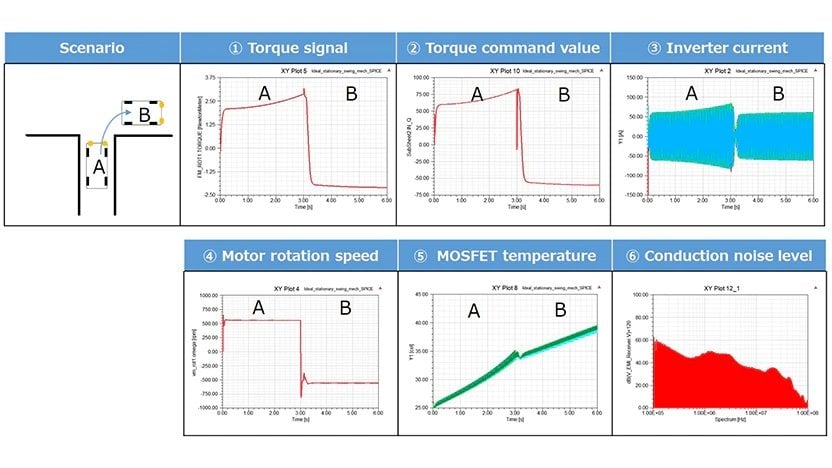electronics-journal.com
22
'21
Written on Modified on
Toshiba’s New Simulation Technology for Model-Based Development Shortens Verification Times for Automotive Semiconductors by about 90 Percent
Toshiba Electronic Devices & Storage Corporation (“Toshiba”) has developed a model-based development (MBD) simulation technology that shortens verification times for automotive semiconductors by about 90 percent.

The technology allows automotive equipment developers to quickly evaluate designs using Toshiba’s automotive semiconductors, helping to shorten development times.
As electric vehicles grow in popularity and advanced driver-assistance systems become standard, automotive equipment is growing increasingly advanced and complicated. Model-based development, a development methodology that uses software to simulate models and evaluate performance in real-time, is helping product developers to refine complex design processes. In the automobile industry, MBD contributes to development advances by simultaneously progressing design and verification prior to making prototypes.
MBD separates functions into blocks and verifies total vehicle behavior by connecting each block. Detailed simulation models that include the behavior of semiconductors in individual blocks are required to verify heat and electromagnetic interference (EMI), essential parameters for assessing the performance of automotive equipment. However, as models become more detailed and precise, verification times are growing longer.
Toshiba took a long hard look at its current evaluation and verification technology for automotive equipment. Sub-systems like electric power steering comprise semiconductor-based electronic circuits that work in microseconds along with mechanical components, gears and shafts, that work in milliseconds. Toshiba’s current technology simulates the electronic circuits and mechanical components at the same time, on a microsecond basis, results in a large number of unnecessary and time-consuming calculations in the mechanical components. The technology is also complicated because it adopts the SPICE model—Simulation Program with Integrated Circuit Emphasis—that defines over 100 parameters for the simulation of semiconductor behavior.
Toshiba’s new modeling technology, “Accu-ROM™ ”, separately calculates the electronic circuits and the mechanical components. First it verifies the mechanical components, then simplifies the model for mechanical components and finally verifies the total system, including its electric circuits. This approach eliminates unnecessary calculations. In evaluating the electric circuits, the model automatically generates a Very High speed integrated circuit Hardware Description Language-Analog Mixed Signal (VHDL-AMS) model from the SPICE model. VHDL-AMS model allows the verification range to be limited to essential parameters, such as heat and EMI noise, shortening the verification time. For example, verification of a power steering system with Toshiba’s current technology takes 32 hours 51 minutes, but that falls to 3 hours 27 minutes[1] with the new technology.
Toshiba will use the new technology to promote development of high-heat dissipation and low noise automotive semiconductors, and to provide its customers with a development environment which makes it easier to use Toshiba’s products. In addition to automotive applications, Toshiba will use the new technology in semiconductors for other applications, such as industrial equipment and home appliances.
www.toshiba.com

